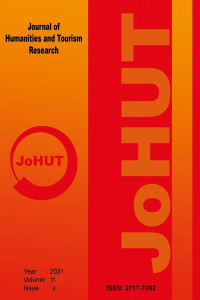İngiltere'de Endüstri Mirasının Oluşumu: Tarihi Tekstil Endüstrisi Komplekslerinin Korunması, Uyarlanması ve Yeniden Yorumlanması
Öz
Bu çalışma tarihi endüstri alanlarının, koruma tarihi ve yeniden yorumlanıp halka sunulma biçimlerine odaklanarak, UNESCO Dünya Mirası Alanı'na dönüşümünü araştırmaktadır. Örnek vaka incelemesi olarak, Birleşik Krallık ’da bulunan ve 2001 yılında UNESCO Dünya Miras Listesi’ne alınan üç öncü tekstil fabrikası belirlenmiştir. Bunlar, Derwent Vadisi, Saltaire ve New Lanark tekstil fabrikası kompleksleridir. Araştırma kapsamında, literatür tarama, saha ziyaretleri ve alanların Dünya Miras koordinatörleri ile kişisel görüşmeler gerçekleştirilmiştir. Çalışma sonucunda; dönemin tarihsel, ekonomik ve pratik koşullarının, endüstriyel mirası koruma ve yeniden kullanım stratejilerine yönelik yaklaşımlarda önemli bir etkisi olduğu görülmüştür. Ayrıca, yeniden kullanım ve yeniden yorumlama süreçlerinin, her bir alan için yeni bir kimlik arayışında ne kadar önemli bir rol oynadığı ortaya çıkmaktadır.
Anahtar Kelimeler
Endüstriyel Miras Koruma Tarihi Yeniden Yorumlama Sunum Dünya Miras Alani
Kaynakça
- Beeho A. J. and Prentice, R. C. (1997). Conceptualizing the experiences of heritage tourists: A case study of New Lanark world heritage village. Tourism Management, 18 (2), 75-87.
- Buchanan, A. (2000). The origins of industrial archaeology. Perspectives on industrial archaeology, N. Cossons (Ed.), London: Science Museum.
- Buchanan, A. (2005). Industrial archaeology: past, present, and prospective. Industrial Archaeology Review, 27 (1), 19-21.
- Cossons, N. (Ed.). (2000). Perspectives on industrial archaeology. London: Science Museum
- Cossons, N. (2007). Industrial archaeology, the challenge of the evidence. The Antiquaries Journal, 87, 1-52.
- County Council of the County of Lanark (1973). A report to the new lanark working party by the feasibility study team, United Kingdom.
- Çiftçi, G. (2017), “Politicial Crises’ Implications on UNESCO World Heritage Sites”, Karabük Üniversitesi Sosyal Bilimler Enstitüsü Dergisi, 2017, 7, (1), 145-161.
- Department for Digital, Culture, Media, And Sport (DCMS) (2007). The costs and benefits of world heritage site status in the UK. Full Report PricewaterhouseCoopers LLP, United Kingdom
- Douet, J. (Ed.). (2016). Introduction. Industrial Heritage Re-Tooled: The TICCIH Guide to Industrial Heritage Conservation, (p. 1-4.) Routledge.
- Falconer, K. (2000). Not a bad record? Changing Perspectives in Recording, in Perspectives on Industrial Archaeology, (p. 57-85), London.
- Falconer, K. (2005). Industrial archaeology goes universal. Industrial Archaeology Review, 27 (1), (23-26), Doi: 10.1179/030907205X44330.
- Falconer, K. (2006). The industrial heritage in Britain – the first fifty years. La revue pour l’histoire du CNRS [En ligne], 14 | 2006, mis en ligne le 03 mai 2008, consulté le 06 janvier 2017. URL: http:// histoire-cnrs.revues.org/1778; doi: 10.4000/histoire-cnrs.1778.
Industrial Heritage Making in Britain: The Conservation, Adaptation, and Reinterpretation of the Historic Textile Industry Complexes
Öz
The aim of this study is to explore the transformation of outdated industrial sites into UNESCO World Heritage Sites, focusing on their conservation history and how they were re-interpreted and presented to the public in terms of representing the working-class, women, and child labor as well as historic industrial values of the sites. As case studies, I selected three pioneering textile mills in the United Kingdom that were designated as UNESCO World Heritage Site in 2001. These are the Derwent Valley, Saltaire, and New Lanark Mills. The study has been carried out by analyzing previous sources, several international and national policy documents regarding the protection and management of the sites, and conducting site visits and interviews with the site coordinators. The industrial sites examined here clearly display how the historical, economic, and practical context impacts the approaches to the conservation and adaptive re-use strategies of industrial heritage. They also illustrate how reuse and reinterpretation processes have played a crucial role in the search for a new identity for each historic industrial site.
Anahtar Kelimeler
Industrial Heritage Conservation History Re-Interpretation Presentation World Heritage Sites
Kaynakça
- Beeho A. J. and Prentice, R. C. (1997). Conceptualizing the experiences of heritage tourists: A case study of New Lanark world heritage village. Tourism Management, 18 (2), 75-87.
- Buchanan, A. (2000). The origins of industrial archaeology. Perspectives on industrial archaeology, N. Cossons (Ed.), London: Science Museum.
- Buchanan, A. (2005). Industrial archaeology: past, present, and prospective. Industrial Archaeology Review, 27 (1), 19-21.
- Cossons, N. (Ed.). (2000). Perspectives on industrial archaeology. London: Science Museum
- Cossons, N. (2007). Industrial archaeology, the challenge of the evidence. The Antiquaries Journal, 87, 1-52.
- County Council of the County of Lanark (1973). A report to the new lanark working party by the feasibility study team, United Kingdom.
- Çiftçi, G. (2017), “Politicial Crises’ Implications on UNESCO World Heritage Sites”, Karabük Üniversitesi Sosyal Bilimler Enstitüsü Dergisi, 2017, 7, (1), 145-161.
- Department for Digital, Culture, Media, And Sport (DCMS) (2007). The costs and benefits of world heritage site status in the UK. Full Report PricewaterhouseCoopers LLP, United Kingdom
- Douet, J. (Ed.). (2016). Introduction. Industrial Heritage Re-Tooled: The TICCIH Guide to Industrial Heritage Conservation, (p. 1-4.) Routledge.
- Falconer, K. (2000). Not a bad record? Changing Perspectives in Recording, in Perspectives on Industrial Archaeology, (p. 57-85), London.
- Falconer, K. (2005). Industrial archaeology goes universal. Industrial Archaeology Review, 27 (1), (23-26), Doi: 10.1179/030907205X44330.
- Falconer, K. (2006). The industrial heritage in Britain – the first fifty years. La revue pour l’histoire du CNRS [En ligne], 14 | 2006, mis en ligne le 03 mai 2008, consulté le 06 janvier 2017. URL: http:// histoire-cnrs.revues.org/1778; doi: 10.4000/histoire-cnrs.1778.
Ayrıntılar
| Birincil Dil | İngilizce |
|---|---|
| Bölüm | MAKALELER |
| Yazarlar | |
| Yayımlanma Tarihi | 31 Aralık 2021 |
| Yayımlandığı Sayı | Yıl 2021 Cilt: 11 Sayı: 4 |


